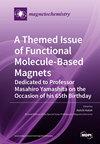Electrophoretic Deposition of One- and Two-Layer Compacts of Holmium and Yttrium Oxide Nanopowders for Magneto-Optical Ceramics Fabrication
IF 2.5
4区 化学
Q2 CHEMISTRY, INORGANIC & NUCLEAR
引用次数: 0
Abstract
In this work, the possibility of fabricating composite magneto-optical ceramics by electrophoretic deposition (EPD) of nanopowders and high-temperature vacuum sintering of the compacts was investigated. Holmium oxide was chosen as a magneto-optical material for the study because of its transparency in the mid-IR range. Nanopowders of magneto-optical (Ho0.95La0.05)2O3 (HoLa) material were made by self-propagating high-temperature synthesis. Nanopowders of (Y0.9La0.1)2O3 (YLa) were made by laser synthesis for an inactive matrix. The process of formation of one- and two-layer compacts by EPD of the nanopowders from alcohol suspensions was studied in detail. Acetylacetone was shown to be a good dispersant to obtain alcohol suspensions of the nanopowders, characterized by high zeta potential values (+29–+80 mV), and to carry out a stable EPD process. One-layer compacts were made from the HoLa and YLa nanopowders with a density of 30–43%. It was found out that the introduction of polyvinyl butyral (PVB) into the suspension leads to a decrease in the mass and thickness of the green bodies deposited, but does not significantly affect their density. The possibility of making two-layer (YLa/HoLa) compacts with a thickness of up to 2.6 mm and a density of up to 46% was demonstrated. Sintering such compacts in a vacuum at a temperature of 1750 °C for 10 h leads to the formation of ceramics with a homogeneous boundary between the YLa/HoLa layers and a thickness of the interdiffused ion layer of about 30 μm.电泳沉积用于制造磁光陶瓷的单层和双层氧化钬和氧化钇纳米粉体复合物
在这项工作中,研究人员探讨了通过纳米粉体的电泳沉积(EPD)和高温真空烧结压实物来制造复合磁光陶瓷的可能性。之所以选择氧化钬作为研究的磁光材料,是因为它在中红外范围内具有透明度。磁光(Ho0.95La0.05)2O3(HoLa)材料的纳米粉体是通过自蔓延高温合成法制成的。对于非活性基体,则采用激光合成法制备了(Y0.9La0.1)2O3 (YLa)纳米粉体。详细研究了纳米粉体从酒精悬浮液中通过 EPD 形成单层和双层致密体的过程。研究表明,乙酰丙酮是一种很好的分散剂,可用于获得纳米粉体的酒精悬浮液,其特点是具有较高的 zeta 电位值(+29-+80 mV),并可进行稳定的 EPD 过程。用密度为 30-43% 的 HoLa 和 YLa 纳米粉体制成了单层压实物。研究发现,在悬浮液中加入聚乙烯醇缩丁醛(PVB)会导致沉积绿色体的质量和厚度减少,但对其密度影响不大。实验证明,可以制造出厚度达 2.6 毫米、密度达 46%的双层(YLa/HoLa)致密体。在温度为 1750 ℃ 的真空中烧结这种密实物 10 小时,可形成 YLa/HoLa 层之间边界均匀的陶瓷,相互扩散的离子层厚度约为 30 μm。
本文章由计算机程序翻译,如有差异,请以英文原文为准。
求助全文
约1分钟内获得全文
求助全文
来源期刊

Magnetochemistry
Chemistry-Chemistry (miscellaneous)
CiteScore
3.90
自引率
11.10%
发文量
145
审稿时长
11 weeks
期刊介绍:
Magnetochemistry (ISSN 2312-7481) is a unique international, scientific open access journal on molecular magnetism, the relationship between chemical structure and magnetism and magnetic materials. Magnetochemistry publishes research articles, short communications and reviews. Our aim is to encourage scientists to publish their experimental and theoretical results in as much detail as possible. Therefore, there is no restriction on the length of the papers. The full experimental details must be provided so that the results can be reproduced.
 求助内容:
求助内容: 应助结果提醒方式:
应助结果提醒方式:


